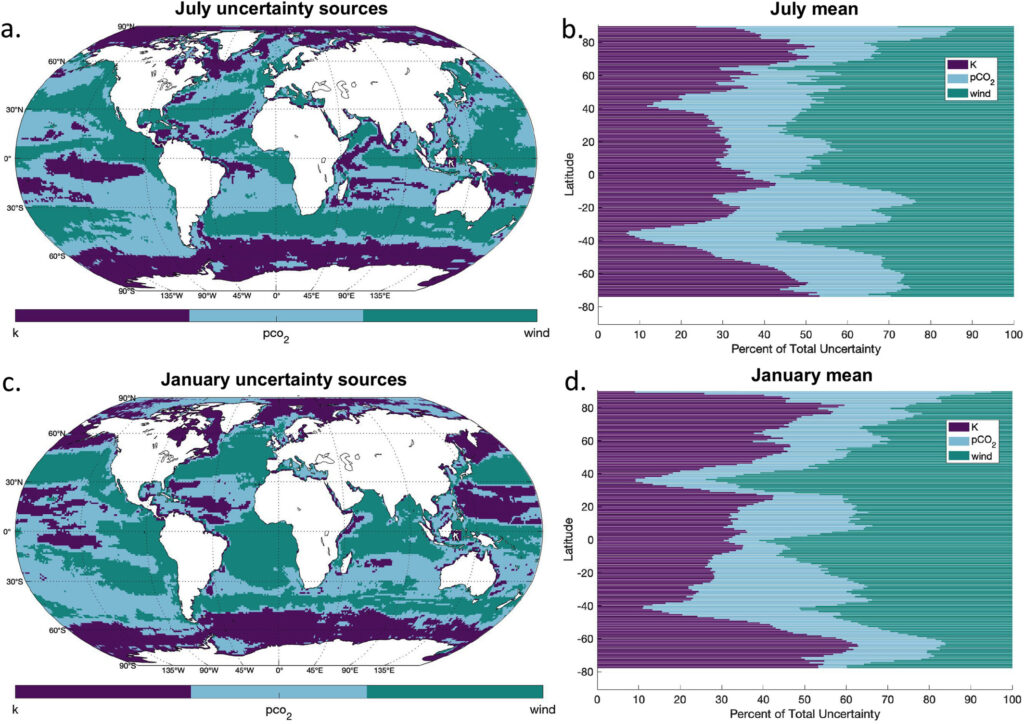
Annika Jersild, ESSIC Visiting Assistant Research Scientist, is first author on a new paper in Geophysical Research Letters titled “A Spatially Explicit Uncertainty Analysis of the Air-Sea CO2 Flux From Observations”.
The ocean plays an important role in regulating climate and the carbon cycle by absorbing and releasing carbon through the air-sea interface, known as a global carbon sink. In order to better understand these dynamics, we need to accurately quantify the amount of carbon exchanged between the ocean and atmosphere reservoirs, known as our air-sea carbon flux. Since the data can’t be retrieved by satellites, Jersild and her co-author Peter Landschützer used a two-step neural network machine learning method, the SOM-FFN, to quantify the air-sea carbon flux and the uncertainty associated with these observation-based estimates. The researchers found that the sources of flux uncertainty vary regionally, with subtropical uncertainty dominated by choice of wind product but polar uncertainty influenced most by the coefficient chosen for the air-sea gas exchange transfer. Areas with fewer observations correlate with higher uncertainty and bias.
This analysis provides important motivation for maintaining and increasing global ocean carbon observations, and is an important step toward closing the carbon budget through accurate quantification of the fluxes at the air-sea interface.
Annika Jersild is an ESSIC research scientist working with NASA Goddard’s Global Modeling and Assimilation Office (GMAO). Her research focuses on applying quantitative techniques such as machine learning, data assimilation, and modeling to answer questions about ocean dynamics and constrain uncertainty in ocean biogeochemical fluxes.
To access the paper, click here: “A Spatially Explicit Uncertainty Analysis of the Air-Sea CO2 Flux From Observations”.






